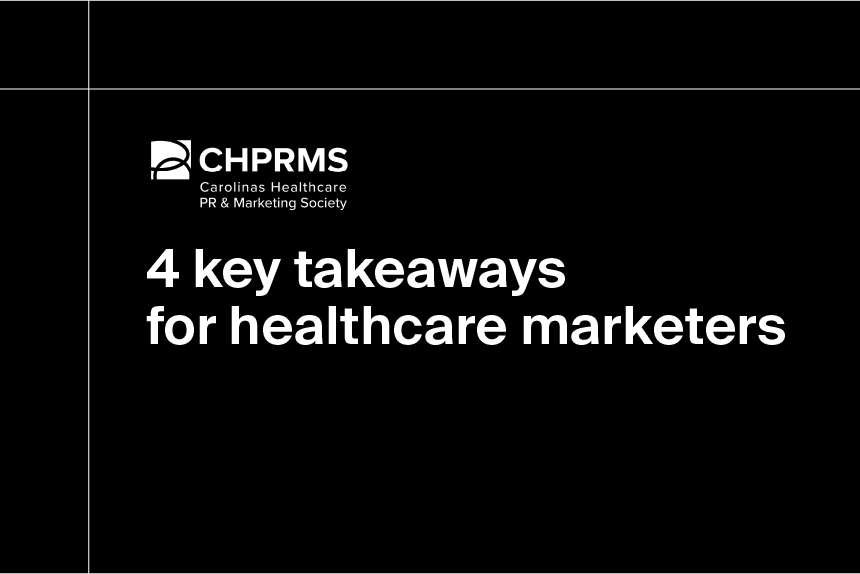Generally speaking, hospitals are the best resource when it comes to finding the right care for a person’s healthcare needs. Sometimes complications arise, however, and a patient will leave a hospital with an illness or infection that they did not have while arriving. This is known as a hospital-acquired infection (HAI) or a hospital-acquired condition (HAC), and they are more common than one might think.
What are hospital-acquired infections (HAIs)?
Definitive Healthcare currently tracks hospital quality metrics related to HAIs for more than 9,000 hospitals. In this blog, we will focus on the most common hospital-acquired infections, including catheter-associated urinary tract infections (CAUTIs), surgical site infections (SSIs), for hysterectomies and colorectal procedures, Clostridium difficile (C. diff.) intestinal infections, Methicillin-resistant Staphylococcus Aureus (MRSA) blood infections and Central Line-associated Blood Stream Infection (CLABSI).
How are hospital-acquired infections (HAIs) tracked?
HAI prevalence is one of the clinical quality measures tracked by the Centers for Medicare and Medicaid Services (CMS) to improve care quality and patient outcomes. According to the WHO, around one in 10 patients are affected by HAIs, resulting in billions of dollars in excess medical spending, longer patient stays, and higher mortality risks.
Care facilities that report higher-than-average rates of HAIs may face penalties and payment reductions from the CMS. In 2015, CMS launched the HAC Reduction Program to reduce preventable complications through financial penalties for the lowest-performing hospitals.
Using data from Definitive Healthcare’s HospitalView product, we’ve created lists of states that had the most hospital-acquired infections in 2023.
U.S. states with the most hospital-acquired infections in 2023
| Rank | State | Total HAIs |
| 1 | CA | 8,024 |
| 2 | NY | 5,491 |
| 3 | TX | 5,177 |
| 4 | FL | 4,503 |
| 5 | PA | 4,058 |
| 6 | OH | 3,391 |
| 7 | IL | 2,970 |
| 8 | NC | 2,807 |
| 9 | GA | 2,759 |
| 10 | MI | 2,495 |
| Total | 41,675 |
Fig. 1 Data is from Definitive Healthcare’s HospitalView product. Data is accurate as of November 2024.
Which states had the most hospital-acquired infections in 2023?
California had the most HAIs in 2023 with 8,024 cases, followed by New York with 5,491 and Texas with 5,177 cases. States with the most HAI cases are also the most populous states in the country, likely because they have a larger patient population at risk for infection.
10 states with the highest observed CAUTI cases
| Rank | State | Cases | Patient days |
| 1 | CA | 1,368 | 1,679,777 |
| 2 | NY | 940 | 1,208,218 |
| 3 | PA | 749 | 884,154 |
| 4 | TX | 742 | 1,339,015 |
| 5 | FL | 549 | 1,079,570 |
| 6 | NC | 475 | 558,565 |
| 7 | GA | 453 | 555,965 |
| 8 | IL | 430 | 635,913 |
| 9 | OH | 417 | 704,830 |
| 10 | MA | 360 | 402,259 |
| Total | 6,483 | 9,048,266 |
Fig. 2 Data is from Definitive Healthcare’s HospitalView product. Data is accurate as of November 2024.
What is CAUTI?
Prolonged use of a catheter can lead to the development of a catheter-associated urinary tract infection (CAUTI). This is caused by bacteria entering the catheter and reaching the urinary tract. Between 15 and 25% of hospitalized patients receive a catheter during their hospital stays, and roughly 75% of UTIs contracted in hospitals are associated with catheterization. CAUTI prevention is reliant on antimicrobial stewardship and correct catheter use.
Much like other infections, CAUTIs correlate with an increased risk of comorbidities, higher care costs, and longer patient stays.
Which states had the most CAUTI cases in 2023?
Last year, California had 1,368 CAUTI cases in ICUs and other wards, giving it the top spot. Following California comes New York with 940 cases, and Pennsylvania with 749.
Interestingly, Texas has the second-highest number of patient days in ICUs and other wards despite ranking fourth in overall cases. Similarly, while Pennsylvania takes the third spot for the number of CAUTI cases, it comes in fifth for the number of patient days in hospital.
10 states with the highest observed SSI: Hysterectomy cases
| Rank | State | Cases | Number of procedures |
| 1 | TX | 203 | 27,080 |
| 2 | FL | 168 | 20,250 |
| 3 | CA | 144 | 19,149 |
| 4 | GA | 134 | 11,505 |
| 5 | NY | 98 | 11,451 |
| 6 | OH | 92 | 9,292 |
| 7 | IL | 88 | 9,280 |
| 8 | PA | 80 | 8,117 |
| 9 | MI | 71 | 7,086 |
| 10 | IN | 71 | 5,875 |
| Total | 1,149 | 129,085 |
Fig. 3 Data is from Definitive Healthcare’s HospitalView product. Data is accurate as of November 2024.
What is SSI?
A surgical site infection (SSI) is an infection that occurs in the area where a procedure took place. Approximately 2% of hysterectomy patients are impacted by an SSI every year. Surgical site infection prevention includes specific wound closure techniques, like avoiding local hair removal, using antimicrobial suture materials, and more. Causes of surgical site infections include exogenous infection and endogenous infection.
Which states had the most SSI: Hysterectomy cases in 2023?
The state with the most SSI: Hysterectomy cases last year was Texas, with 203. Following Texas is Florida with 168 and California with 144.
10 states with the highest observed SSI: Colon cases
| Rank | State | Cases |
| 1 | CA | 706 |
| 2 | TX | 588 |
| 3 | OH | 497 |
| 4 | FL | 496 |
| 5 | NY | 388 |
| 6 | PA | 383 |
| 7 | MI | 362 |
| 8 | NC | 338 |
| 9 | IL | 303 |
| 10 | GA | 271 |
| Total | 4,332 |
Fig. 4 Data is from Definitive Healthcare’s HospitalView product. Data is accurate as of November 2024.
Which states had the most SSI: Colon cases in 2023?
While coming in third for SSI: Hysterectomy cases, California tops the list of SSI: Colon cases with 706 last year. Following California is Texas with 588 cases and Ohio with 497. In addition, while Georgia was fourth for SSI: Hysterectomy cases, it placed at the bottom for colon cases.
Colon SSIs occur when an infection develops in or around the colon during a procedure. Based on the most recent estimates from the Centers for Disease Control and Prevention (CDC), 22% of all hospital-acquired infections are SSIs, and 15% of those are associated with colorectal procedures.
10 states with the highest observed C. Diff cases
| Rank | State | Cases | Patient days |
| 1 | CA | 3,849 | 14,319,729 |
| 2 | NY | 2,467 | 9,984,433 |
| 3 | TX | 2,135 | 12,309,589 |
| 4 | FL | 1,980 | 12,526,438 |
| 5 | PA | 1,825 | 6,825,073 |
| 6 | OH | 1,500 | 5,911,957 |
| 7 | IL | 1,396 | 5,824,431 |
| 8 | MA | 1,176 | 3,546,721 |
| 9 | GA | 1,132 | 5,059,201 |
| 10 | MI | 1,091 | 4,569,037 |
| Total | 18,551 | 80,876,609 |
Fig. 5 Data is from Definitive Healthcare’s HospitalView product. Data is accurate as of November 2024.
What is C. Diff?
Clostridium difficile (C. Diff) is a bacterium that can cause fever, diarrhea and life-threatening colon inflammation known as colitis. According to the CDC, roughly 500,000 cases of C. Diff are reported every year, and 20% of those patients will contract the illness multiple times. Patients with C. Diff are contagious and are encouraged to prevent the spread of bacteria through hand washing and other enhanced hygienic efforts.
Which states had the most C. Diff cases in 2023?
Like SSI: Colon cases, California has the highest number of C. Diff cases with 3,849. However, New York comes in second this time with 2,467 cases, followed by Texas with 2,135. While New York had the second most cases, its total patient days were significantly smaller than the other top states, indicating that the cases there were treated efficiently and effectively.
10 states with the highest MRSA cases
| Rank | State | Cases | Patient days |
| 1 | CA | 658 | 15,350,656 |
| 2 | FL | 643 | 13,295,962 |
| 3 | NY | 620 | 10,659,812 |
| 4 | TX | 580 | 13,499,008 |
| 5 | PA | 378 | 7,251,834 |
| 6 | OH | 375 | 6,215,840 |
| 7 | NC | 334 | 5,642,656 |
| 8 | TN | 297 | 4,034,315 |
| 9 | GA | 294 | 5,496,950 |
| 10 | MI | 243 | 4,878,082 |
| Total | 4,422 | 86,325,115 |
Fig. 6 Data is from Definitive Healthcare’s HospitalView product. Data is accurate as of November 2024.
What is MRSA?
Methicillin-resistant Staphylococcus aureus (MRSA) is a bacterial healthcare-acquired infection that can lead to sepsis and death if left untreated. MRSA treatment includes antibiotics; however, the MRSA infection is resistant to some forms of antibiotics, making it difficult to treat. The staph bacteria can cause bloodstream infections, surgical site infections, and pneumonia.
Globally, there is a rise in antibiotic resistance due to new resistance mechanisms that threaten treatments. As the effectiveness of antibiotics decreases, infections become more difficult to treat. Additionally, areas where people can buy antibiotics without a prescription have greater antibiotic resistance.
Though anyone can contract MRSA through skin-to-skin contact, the risk increases for military personnel, athletes, students and those receiving inpatient medical care or undergoing surgical procedures. Healthcare providers should properly sterilize medical equipment between patients to prevent infection.
Which states had the most MRSA cases in 2023?
The top three states with the most MRSA cases were California, Florida, and New York with 658, 643, and 620 cases respectively. Other states like Texas and Ohio have appeared several times throughout these lists, but Tennessee makes its one and only appearance here, taking the eighth spot with 297 cases.
10 states with the highest CLABSI cases
| Rank | State | Cases | Patient days |
| 1 | CA | 1,299 | 1,749,725 |
| 2 | TX | 929 | 1,458,565 |
| 3 | FL | 667 | 1,145,957 |
| 4 | PA | 643 | 858,859 |
| 5 | NC | 545 | 618,946 |
| 6 | IL | 516 | 696,994 |
| 7 | OH | 510 | 675,747 |
| 8 | GA | 475 | 643,058 |
| 9 | MI | 411 | 467,409 |
| 10 | MA | 313 | 440,473 |
| Total | 6,308 | 8,755,733 |
Fig. 7 Data is from Definitive Healthcare’s HospitalView product. Data is accurate as of November 2024.
What is CLABSI?
Central line-associated bloodstream infections (CLABSIs) are linked to thousands of patient deaths every year. A “central line” refers to a venous catheter, or a long-term IV, placed in a jugular, femoral, or subclavian vein. Healthcare providers mostly use central lines for patient rehydration, drug infusions, blood pressure monitoring, and more. CLABSI prevention involves CDC guidelines for providers, with recommendations such as bathing patients in chlorhexidine and replacing dressings regularly.
Which states had the most CLABSI cases in 2023?
California, Texas, and Florida make up the top three, with 1,299, 929, and 667 cases respectively. Despite having more overall cases than other infections like C. Diff or MRSA, the total number of patient days for CLABSI is much smaller, indicating that this infection takes less time to treat.
What is the most common hospital-acquired infection?
The most common HAI varies depending on the metric you use.
The most common hospital-acquired infection last year based on the number of cases was Clostridium difficile (C. Diff) with 18,551 cases across the top 10 states. Because C. Diff is often contracted by patients multiple times during their stay, it’s unsurprising that it takes the overall top spot based on cases. In contrast, SSI: Hysterectomy was the least common infection with a total of 1,149 cases among the top 10 states.
However, methicillin-resistant staphylococcus aureus (MRSA) takes the top spot when ranking by the total patient days with 86,325,115, likely given the difficulties with treatment given the rise of antibiotic resistance MRSA. CLABSI was the infection with the lowest total patient days at 8,755,733 among the top 10 states.
Which states had the highest number of hospital-acquired infections (HAIs)?
As shown in the data above, California makes the top ten list for each HAI category. This is likely attributed to the state’s high patient population, as we calculated rankings on volume and not ratio.
Similarly, Texas and Florida appear on all seven lists. Florida’s patient population is especially prone to HAIs and other complications, with people aged 60 or older making up nearly one-fifth of the population.
Learn more
Healthcare Insights are developed with healthcare commercial intelligence from the Definitive Healthcare platform. Want even more insights? Start a free trial now and get access to the latest healthcare commercial intelligence on hospitals, physicians, and other healthcare providers.




